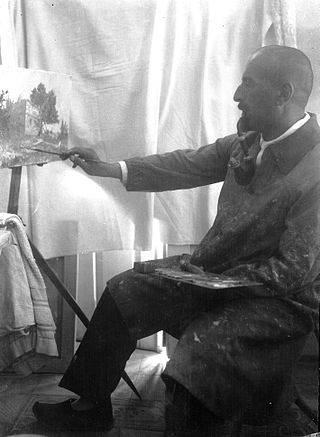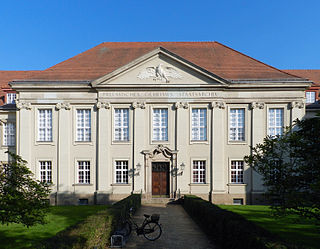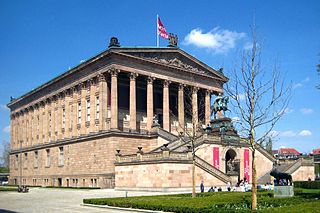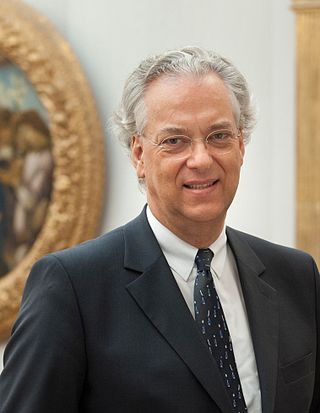
The Museo Egizio or Egyptian Museum is an archaeological museum in Turin, Italy, specializing in Egyptian archaeology and anthropology. It houses one of the largest collections of Egyptian antiquities, with more than 30,000 artifacts, and is considered the second most important Egyptological collection in the world, after the Egyptian Museum of Cairo. In 2019, it received 853,320 visitors, making it one of the most visited museums in Italy.

Pitt Rivers Museum is a museum displaying the archaeological and anthropological collections of the University of Oxford in England. The museum is located to the east of the Oxford University Museum of Natural History, and can only be accessed through that building.

The History of Science Museum in Broad Street, Oxford, England, holds a leading collection of scientific instruments from Middle Ages to the 19th century. The museum building is also known as the Old Ashmolean Building to distinguish it from the newer Ashmolean Museum building completed in 1894. The museum was built in 1683, and it is the world's oldest surviving purpose-built museum.

The German Historical Museum, known by the acronym DHM, is a museum in Berlin, Germany devoted to German history. It describes itself as a place of "enlightenment and understanding of the shared history of Germans and Europeans". It is often viewed as one of the most important museums in Berlin and is one of the most frequented. The museum is located in the 17th century Zeughaus (armory) on the Unter den Linden, just across the Spree from Museum Island. The museum's attached Exhibition Hall was designed by I. M. Pei in the late 20th century. The Zeughaus is closed for renovation, while the Exhibition Hall remains open.

The Bode Museum, formerly called the Kaiser-Friedrich-Museum, is a listed building on the Museum Island in the historic centre of Berlin. It was built from 1898 to 1904 by order of German Emperor William II according to plans by Ernst von Ihne in Baroque Revival style. The building's front square featured a memorial to German Emperor Frederick III, which was destroyed by the East German authorities. Currently, the Bode-Museum is home to the Skulpturensammlung, the Museum für Byzantinische Kunst and the Münzkabinett. As part of the Museum Island complex, the Bode-Museum was inscribed on the UNESCO World Heritage List in 1999 because of its outstanding architecture and testimony to the development of museums as a cultural phenomenon in the late 19th and early 20th centuries.
The Prussian Cultural Heritage Foundation is a German federal government body that oversees 27 museums and cultural organizations in and around Berlin, Germany. Its purview includes all of Berlin's State Museums, the Berlin State Library, the Prussian Privy State Archives and a variety of institutes and research centers. As such, it is one of the largest cultural organizations in the world, and also the largest cultural employer in Germany with around 2,000 staff as of 2020. More than four million people visited its museums in 2019.

Friedrichswerder Church was the first Neo-Gothic church built in Berlin, Germany. It was designed by an architect better known for his Neoclassical architecture, Karl Friedrich Schinkel, and was built under his direction from 1824 to 1831.
The Antikensammlung Berlin is one of the most important collections of classical art in the world, now held in the Altes Museum and Pergamon Museum in Berlin, Germany. It contains thousands of ancient archaeological artefacts from the ancient Greek, Roman, Etruscan and Cypriot civilizations. Its main attraction is the Pergamon Altar and Greek and Roman architectural elements from Priene, Magnesia, Baalbek and Falerii. In addition, the collection includes a large number of ancient sculptures, vases, terracottas, bronzes, sarcophagi, engraved gems and metalwork.

Alexander Baerwald was a German Jewish architect best known for his work in Haifa, today in Israel, during Late Ottoman and British rule.

The Vorderasiatisches Museum is an archaeological museum in Berlin. It is in the basement of the south wing of the Pergamon Museum and has one of the world's largest collections of Southwest Asian art. 14 halls distributed across 2,000 square meters of exhibition surface display southwest Asian culture spanning six millennia. The exhibits cover a period from the 6th millennium BCE into the time of the Muslim conquests. They originate particularly from today's states of Iraq, Syria and Turkey, with singular finds also from other areas. Starting with the Neolithic finds, the emphasis of the collection is of finds from Sumer, Babylonia and Assyria, as well as northern Syria and eastern Anatolia.

The Bern Historical Museum is the second largest historical museum in Switzerland. It was designed by the Neuchâtel architect André Lambert and built in 1894. Since it was initially conceived as the Swiss National Museum, the architect took as his model various historic castles from the 15th and 16th centuries. An extension to the original museum building was completed in 2009.

The Prussian Heritage Image Archive is an agency of the Prussian Cultural Heritage Foundation. The archive is housed at the Otto Nagel-Haus in Berlin and offers photographs, cartoons and drawings in the fields of history, culture and fine arts. The collection also contains the personal estates, archives and portfolios of many famous photographers who documented life in Germany. Organizationally, the archive is a division of the Berlin State Library.
The Ibero-American Institute or IAI is an interdisciplinary institution located in Berlin, Germany, for academic and cultural exchange between Germany and Latin America, Spain, Portugal and the Caribbean. It is the largest non-university research center for Latin American Studies outside of Latin America. It also features the largest specialized library in Europe on Latin America, Spain, Portugal and the Caribbean. In addition to a large rare book collection, the IAI collects and preserves magazines, electronic documents, maps, audio media, photographs, videos, DVDs, papers and diverse additional materials. The IAI is a member of the research association CEISAL and the documentation network association REDIAL. Founded in 1930, since 1962 the IAI has been an agency of the Prussian Cultural Heritage Foundation. It is located at the Kulturforum near Potsdamer Platz in Berlin-Mitte.

The Secret State Archives Prussian Cultural Heritage Foundation is an agency of the Prussian Cultural Heritage Foundation headquartered in Berlin, Germany. A Federal statutory body, it is one of the largest repositories of primary source documents in Germany and spans the history of Prussia, Brandenburg, the House of Hohenzollern and the Prussian Army. Insofar as the agency represents over 400 years of archival work of the former states of Brandenburg-Prussia, including their main roots in the Teutonic Knights, the Archives can be said to cover "nine centuries of European history between Königsberg and Cleves."

The National Gallery in Berlin, Germany, is a museum for art of the 19th, 20th and 21st centuries. It is part of the Berlin State Museums. From the Alte Nationalgalerie, which was built for it and opened in 1876, its exhibition space has expanded to include five other locations. The museums are part of the Berlin State Museums, owned by the Prussian Cultural Heritage Foundation.
AthenaPlus is a CIP best practice network started in March 2013 which aims to facilitate access to networks of cultural heritage, enrich metadata, as well as improve search, retrieval and re-use of Europeana's content by enhancing multilingual terminology management and the export/publication tool. By the end of the project, AthenaPlus will contribute more than 3.6 millions of metadata records to Europeana, from both public and private sectors, focusing mainly on museums content. In addition to enabling access to cultural heritage, AthenaPlus is also focused on creative use of content, and adapting data to users with different needs by means of tools that support the development of virtual exhibitions, tourist and didactic applications.

The Museum of Islamic Art is located in the Pergamon Museum and is part of the Staatliche Museen zu Berlin.

The Museu Nacional de Antropologia is an anthropological museum in the Ingombota District of the city of Luanda, Angola. Founded on 13 November 1976, it is a cultural and scientific institution, dedicated to the collection, research, conservation, presentation and dissemination of the Angolan cultural heritage.

Michael Eissenhauer is a German art historian and was director-general of the Staatliche Museen zu Berlin.

Kefah Ali Deeb is a Syrian human rights activist, artist and writer. She left Syria after persecution during the Syrian war and has been living in exile in Berlin, Germany, since 2014. In Germany, she has been interviewed and published her own opinion columns about the life of migrants in German newsmedia and online projects. Since 2015, she has also been active as a museum guide for the Multaka project, an initiative of Berlin museums to convey art historical contexts to Arabic-speaking visitors. As writer and translator she also has published several books for children in Arabic.
















